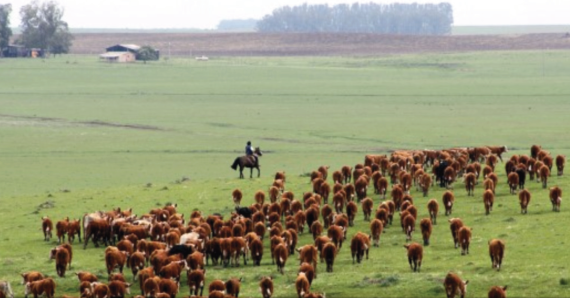©Giovani Theisen
Rio Grande do Sul is the most southern state of Brazil. It is around five times bigger than The Netherlands. The countryside consists of rangelands, lakes, nature reserves and more than 3 million hectares of lowlands, on which the farmers mainly grow rice and raise beef-cattle. These farming systems can be more efficient, says Giovani Theisen, working at Embrapa, the Brazilian Agricultural Research Corporation. He has examined alternative cropping systems that produce more food in a sustainable way.
Mini-farms
During nine years Theisen created five mini-farms, with different cropping systems on an experimental station of Embrapa in Rio Grande do Sul. He compared the dominant monoculture of rice with an existing rice-soybean rotation scheme, with and without soil tillage. But he also introduced a new corn-soybean rotation scheme with beef-cattle or cover crops in winter.
Ridges
As corn doesn’t like to get wet feet, they created 8 meters wide ridges in their fields, to avoid flooding and carry off the water. The main advantage of these systems were that the researchers could combine the soybean and corn production in summer with beef-cattle or cover crops in winter, while the rice fields are commonly kept fallow in winter.
Organic matter
This new cropping system has several advantages, says Theisen. The profits were bigger, because they allow to sell several food products during the whole year. Besides, the corn/soy/cattle combination delivered an increase of organic matter in the soils of a surprising 46 percent in nine years. Moreover, the emissions of greenhouse gasses in the new system were two to three times lower than in the rice-based systems. The only backdrop was that more herbicides were needed, to finish the winter cover crops.
Food
Theisen also figured out how much food the different cropping systems were able to produce. On average, one hectare of irrigated rice could feed 12 persons, the rice/soybean combination could feed 19 persons and the corn/soy/cattle system 25 persons per year. ‘Rice in monocrop is cultivated two or three seasons, and the next three seasons the field is not used for rice anymore. We are working to optimize the land use in these fields’, says Theisen.
Rice paddies in Rio Grande do Sul.
He hopes that the lowland farmers will invest in this ridge-based production system. He will translate the results in his PhD thesis to practical advice for the farmers. ‘And the plots for this long-term experiment are still there, farmers can always visit them.’
Sustainable intensification
Irrigated rice will remain the most important crop in these lowlands, says Theisen. 65 Percent of the rice for Brazilian consumption comes from just 1.1 million hectare in Rio Grande do Sul, so this is a key sector for food security in Brazil. But on the remaining 2 million hectares of arable land, the farmers can produce much more food, and in a sustainable way. The demand for corn, for example, is growing in Brazil, both for food and feed. Theisen: ‘If we succeed with the sustainable intensification in the lowlands in south Brazil, we can avoid, at least partially, the ongoing deforestation in the north of Brazil.’

